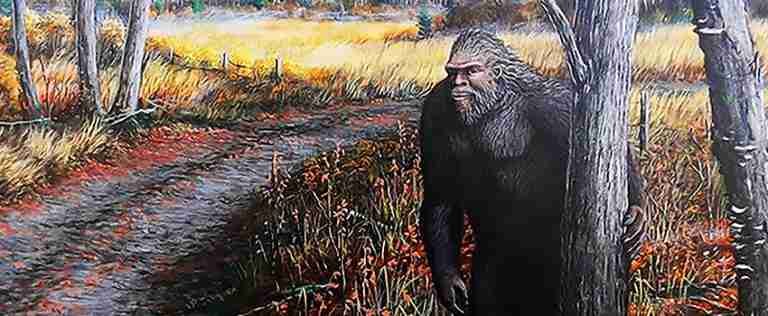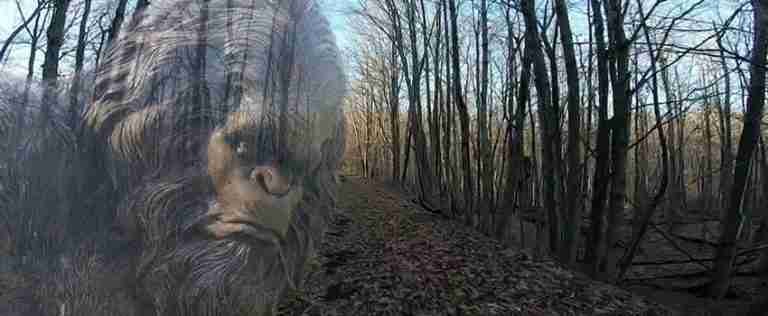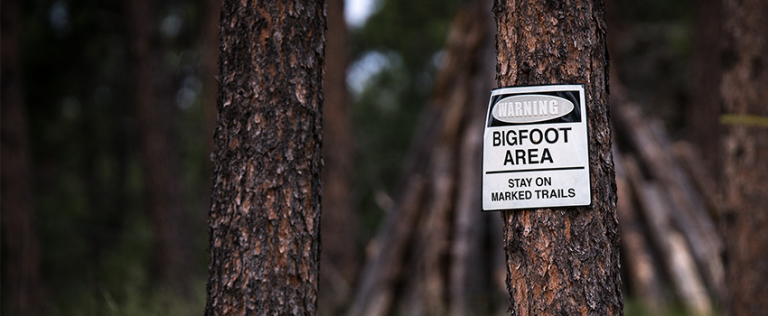Bigfoot in Parody and Satire: Exploring the Enduring Appeal of Bigfoot in Pop Culture

Bigfoot has often been used as a subject of parody and satire in various forms of media, including movies, TV shows, and other works. These parodies and satirical works often portray Bigfoot in humorous or absurd ways, poking fun at the creature’s perceived mysteriousness or the belief in its existence.
One example of Bigfoot being used in a parody is the movie “Harry and the Haunted House,” which features a character who believes that Bigfoot is responsible for the strange happenings in the house. The movie pokes fun at the belief in Bigfoot by depicting the character as being obsessed with the creature and constantly looking for evidence of its existence.
Another example is the TV show “The Big Foot Show,” which is a mockumentary about a group of Bigfoot enthusiasts who go on a hunt for the creature. The show parodies the belief in Bigfoot and the efforts of those who try to find it, portraying the characters as being overly serious and obsessed with the creature.
The use of Bigfoot in parodies and satirical works can have an impact on the creature’s place in popular culture. By portraying Bigfoot in humorous or absurd ways, these works can shape people’s perceptions and understanding of the creature. It is important to consider the potential influence of these portrayals on Bigfoot’s place in popular culture, as they may contribute to the spread of misinformation or misunderstandings about the creature.
Overall, the use of Bigfoot in parodies and satirical works is an interesting aspect of the creature’s place in popular culture. By examining these works, we can gain insight into how people perceive and understand Bigfoot, and how the creature is portrayed in different mediums.
Bigfoot’s Portrayal In Modern Popular Culture
Bigfoot, also known as Sasquatch, is a creature that is believed by some to exist in the wilds of North America. It is typically described as a large, ape-like creature with shaggy fur and a strong, musky odor. The existence of Bigfoot is a topic of debate, with some people claiming to have seen or encountered the creature, while others believe it to be a myth or legend.
Despite the lack of concrete evidence for its existence, Bigfoot has become a popular figure in popular culture. It has been featured in numerous movies, TV shows, video games, and other media, often as a mysterious or supernatural being. It has also been the subject of numerous books, articles, and documentaries, which explore the possibility of its existence and the various theories and claims surrounding it.
The popularity of Bigfoot in popular culture is largely due to the creature’s mysterious and elusive nature. Its supposed habit of living in remote, forested areas, combined with the lack of concrete evidence for its existence, has made it a subject of fascination for many people. Some people believe that Bigfoot represents a link to a more primitive, wilder past, and are drawn to the idea of discovering more about the creature and its potential place in the natural world.
Despite the ongoing debate about its existence, Bigfoot continues to be a prominent figure in popular culture, and its place in popular consciousness is likely to continue for the foreseeable future. Whether or not the creature actually exists, it has become a symbol of the unknown and the mysterious, and its enduring appeal speaks to our desire to explore and understand the world around us.
Bigfoot In Movies And TV Shows
Bigfoot, also known as Sasquatch, is a mysterious creature that has captured the imagination of people around the world for decades. It has been the subject of numerous movies and TV shows, with some portraying it in a humorous or satirical way.
One example of Bigfoot being used in a humorous way in film is the 1987 movie “Harry and the Hendersons.” In this family-friendly comedy, a family accidentally hits a Bigfoot with their car and decides to take it home, leading to a series of wacky adventures. Despite the creature being portrayed as a ferocious beast in other media, “Harry and the Hendersons” presents it as a friendly, lovable creature that just wants to go home.
Another example of Bigfoot being used in a satirical way in TV is the popular show “The X-Files.” In several episodes of the show, the characters investigate cases involving Sasquatch and other cryptids, often poking fun at the idea of these creatures being real. In one episode, for example, the characters are led on a wild goose chase by a man claiming to have proof of Bigfoot’s existence, only to discover that he was actually just a hoaxer trying to make a quick buck.
Using Bigfoot as a subject in these types of works can add a lot of comedic value, as it allows writers and directors to play with the idea of a mysterious, mythical creature and add their own twist to it. Whether it’s a family-friendly comedy or a satirical TV show, Bigfoot has proven to be a popular subject for parody and satire in the world of film and television.
Bigfoot In Other Media
Bigfoot, or Sasquatch, is not just a popular subject in movies and TV shows, it has also been featured in other forms of media, including video games, comic strips, and social media memes.
One example of Bigfoot being used in a satirical way in video games is the “Donkey Kong Country” series, where the character of Donkey Kong is depicted as a Bigfoot-like creature. In these games, Donkey Kong is portrayed as a friendly, mischievous character rather than a menacing beast, and his Bigfoot-like appearance adds to the comedic value of the games.
Bigfoot has also been the subject of numerous satirical comic strips, such as “Calvin and Hobbes” and “The Far Side.” These strips often use Bigfoot as a subject for jokes or as a foil for the main characters, poking fun at the idea of the creature being real and adding a humorous element to the strips.
Social media memes featuring Bigfoot have also become popular in recent years, with people using images of the creature and adding their own captions or jokes to create humorous content. These memes often play off of popular stereotypes or cultural references related to Bigfoot, and can range from silly to clever to outright absurd.
Overall, these satirical takes on Bigfoot differ from more serious depictions in that they use the creature as a source of humor rather than trying to present it as a real, mysterious being. While these satirical works may not be grounded in reality, they provide a lighthearted and entertaining take on the iconic creature.
The Appeal Of Bigfoot In Parody And Satire
Bigfoot, or Sasquatch, has long been a popular subject for parody and satire in various forms of media, including movies, TV shows, and social media. There are several reasons why Bigfoot has such enduring appeal as a subject for these types of works.
One reason is that Bigfoot is a mysterious and iconic creature that has captured the imagination of people around the world for decades. It has a rich cultural history, with various indigenous cultures having their own legends and stories about the creature. This cultural significance adds to the appeal of Bigfoot as a subject for parody and satire, as it allows writers and creators to draw on this rich cultural history and add their own twist to it.
Another reason for the appeal of Bigfoot in parody and satire is that it is a creature that is often depicted as being fierce and formidable, making it a natural subject for jokes and humorous takes. Whether it’s a family-friendly comedy or a satirical TV show, using Bigfoot as a subject allows writers to play with the idea of a mysterious, mythical creature and add their own comedic spin to it.
Finally, the enduring popularity of Bigfoot as a subject in pop culture adds to its appeal as a subject for parody and satire. Whether it’s through social media memes or TV shows, people are constantly being exposed to Bigfoot and its cultural significance, making it a familiar and recognizable subject for these types of works.
Overall, the appeal of Bigfoot in parody and satire lies in its cultural significance, iconic status, and enduring popularity. Whether it’s being used as a subject for jokes or as a foil for comedic characters, Bigfoot has proven to be a popular and enduring subject for these types of works.
Conclusion: Bigfoot in Parody and Satire: Exploring the Enduring Appeal of Bigfoot in Pop Culture
In this article, we examined the use of Bigfoot, or Sasquatch, in parodies and satirical works in various forms of media, including movies, TV shows, and social media. We looked at how Bigfoot has been portrayed in humorous or satirical ways in these works, and explored the reasons for its enduring appeal as a subject for these types of works.
We discussed the cultural significance of Bigfoot, with its rich history and stories told by various indigenous cultures, and how this adds to its appeal as a subject for parody and satire. We also explored how the creature’s iconic status and enduring popularity in pop culture contribute to its appeal in these types of works.
Overall, it is clear that Bigfoot has a strong appeal as a subject for parody and satire, and its enduring popularity in pop culture only adds to this appeal. Whether it’s being used as a subject for jokes or as a foil for comedic characters, Bigfoot has proven to be a popular and enduring subject for these types of works.






